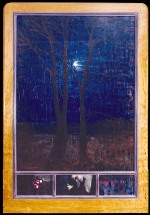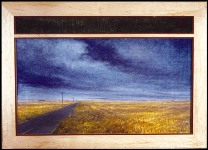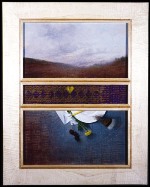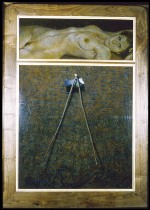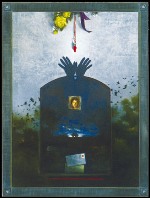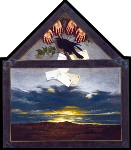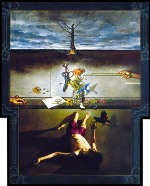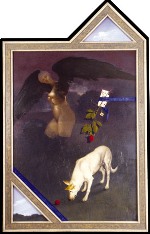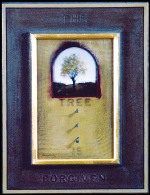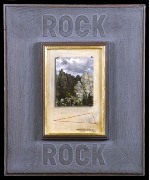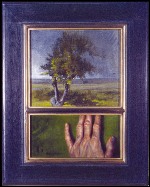I am a story teller. The story is yours and mine. The theme is ours. The specifics are mine. It is about life, and it is told in fragments and with pictures. It is honest. Some of it may be true.
My art work is about life as it occurs through human intellect, experience, and the disquietude of the soul. Doing the work is how I try to understand the complexity of the one life I know I have. The images develop through the explorations of themes that merge from my need to ask who, where, how, and why questions. The questions are timeless, but the uniqueness of each of our lives presents the possibility of personal insight. My work is a search for insight and understanding. We live through experience and intellect, between the day-to-day things and the deeper questions inherent in the human condition. In my work I try to create a space of understanding between the two—a crease where the conversation can take place.
I grew up in the West. My heart is in the Black Hills. I have a reverence for place, and in much of my work I try to capture the relationship between us and the places we inhabit—physically and otherwise. These are the places we care about, and I want us to care about many things.
My art work is an exploration of visual language and landscape, a consideration of how a visual dialogue conveys meaning through formal and narrative elements. It is the symbolic use of setting, time, and character aesthetically gathered to create content and beauty. It is an inquiry into the merger of traditional and contemporary visual voices in an attempt to expand expression. It is a search for the visual equivalent of the narrative poem.
I try to bring the traditional image-making and the contemporary voice together. The last century brought many new pages to the dictionary of visual possibilities. Part of our responsibility as artists, right now, going into this new century, is to find ways to use that new vocabulary, along with the old, to express our understanding of what it is to be here—which is the only thing I think art is really about—ultimately.
As a visual storyteller, I am telling stories in a variety of ways. Almost everything has an implicit as well as an explicit content. It is the juxtaposition of these two that starts to create meaning—a kind of story. Of course, the work can fail when the story becomes too explicit.
I am trying to find ways to pull language into my visual stories. One of my real passions is poetry, perhaps, partially at least, because of working here at Kenyon. For whatever reason, I do have a fascination with word and image. Sometimes I bring words directly into my work—they become part of the conversation.
There is a kind of casual notion of balance and tension in much of my work—objects that are represented as solidly stable or in some more fluid state of equilibrium. These are part of what I do as content, and I'm always excited when I hear that something I do, probably more pragmatically than otherwise, engenders a deeper conversation, a more complex story, in the painting.
A long time ago, I started paying attention to the framing of my work. I began constructing the frames myself. I have done sculpture, and I love to work with my hands. I like to work with wood. I pay close attention to craft and quality. Frames can set up an attitude for a painting—together with the painting they constitute a complete package. When I frame my work, it allows me to expand my story beyond the borders of the painting. I can, quite literally, press the composition outside of the rectangle—outside of its traditionally defined limits.
For me, on one level, painting is just "making things." In one sense, I "construct" my paintings. My work does not have a predetermined plan. A painting, like a story or a conversation, will develop its own voice—you simply have to follow it. And that is the heart and soul of it.

